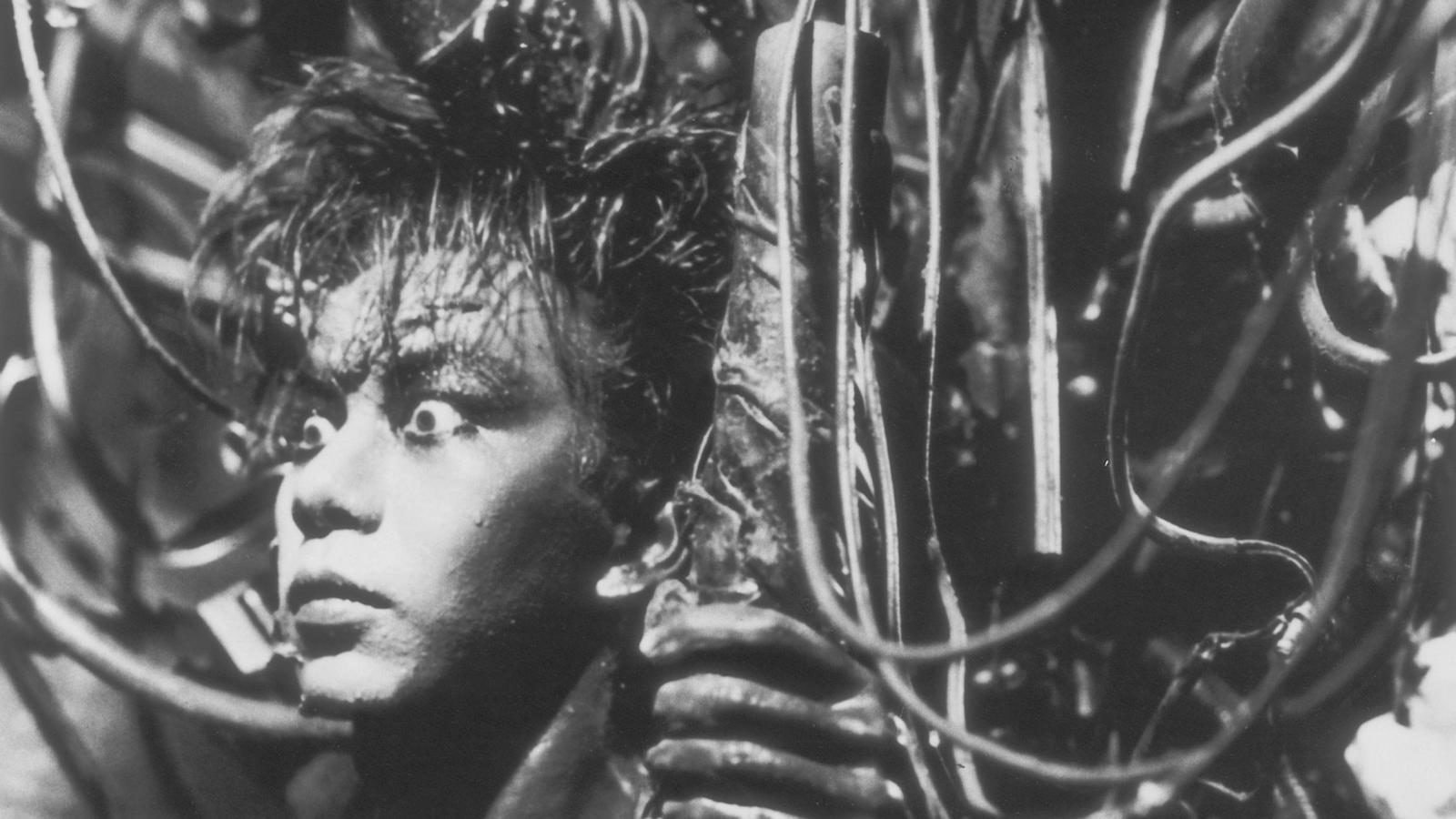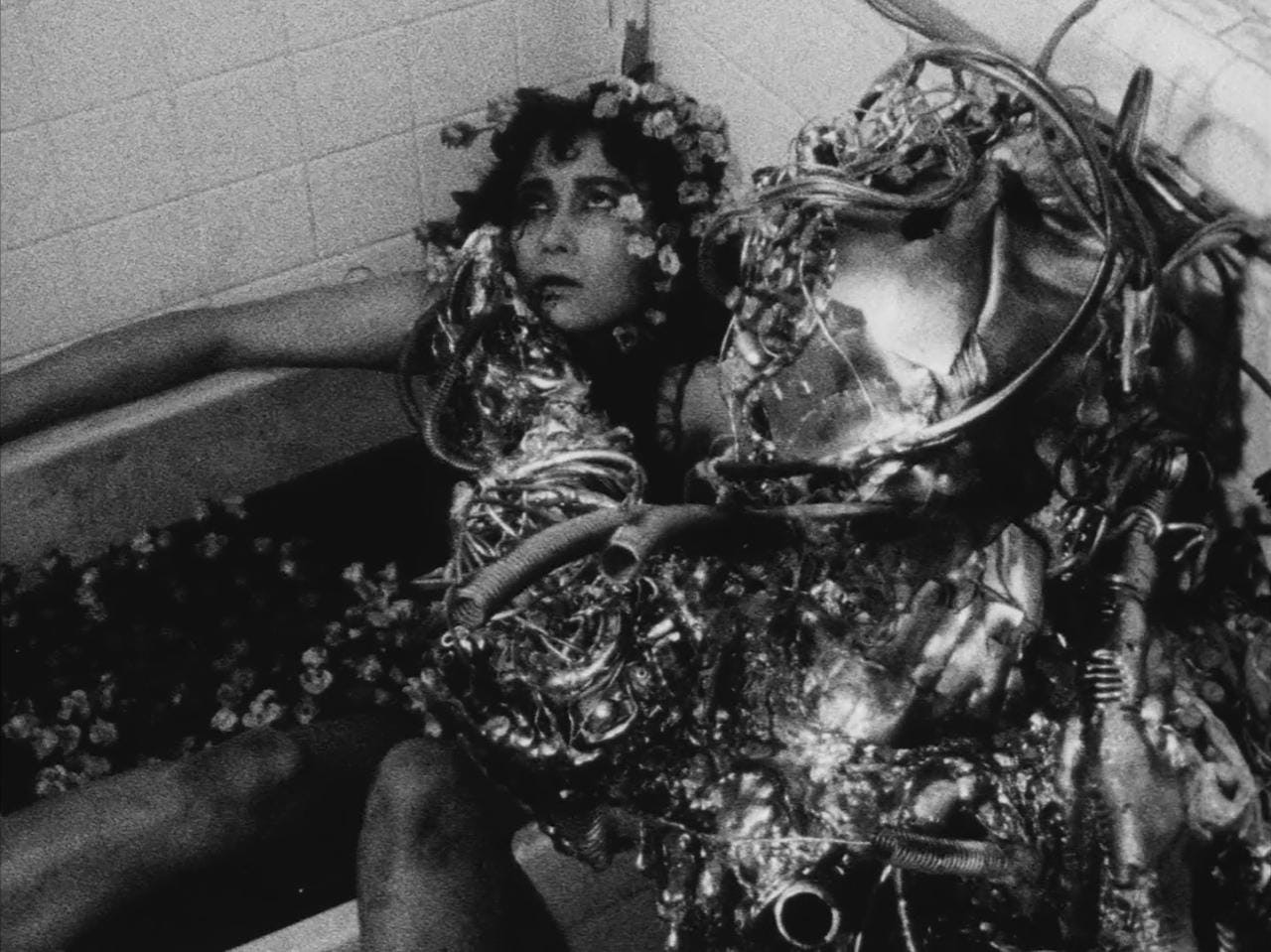
In the late ‘80s, Japanese cinema was in the doldrums. The rising popularity of VHS rental stores and imported Hollywood blockbusters had left theater seats for native productions near-empty, and the major studios of the 1950s’ golden age — including Godzilla producers Toho — were so bereft of ideas that they struggled to stay in business. Despite bright spots like Hayao Miyazaki’s Nausicaä of the Valley of the Wind and Juzo Itami’s comedy The Funeral, box office statistics were damning: theater attendance had dwindled from 1.2 billion in 1960 to just 200 million in 1980, and even Cannes Palme d’Or wins for veteran filmmakers Akira Kurosawa (Kagemusha) and Shohei Imamura (The Ballad of Narayama) did little to curb a perceived decline in quality. Critics were so deflated that they’d call the ‘80s the lost decade of Japanese cinema.
But away from the big screen, a major metamorphosis that would lay the foundations for a ‘90s revival was unfolding in Japan’s filmmaking underground. As ailing major studio Nikkatsu turned to sex films to stay afloat, a grassroots softcore “pink film” industry flourished in its shadow, giving opportunities to unproven filmmakers ignored by leading studios. Straight-to-video filmmaking would also provide an arena for emerging talents to prove their worth. Young talents like Sogo Ishii (Burst City), Shinji Somai (Typhoon Club), and Kiyoshi Kurosawa (Cure), were fostering new ways of funding and producing movies. And with the 1977 establishment of the Pia Film Festival, the first of its kind in Japan, independent filmmakers had a vital new platform to exhibit their work.
One man to benefit from the latter was Shinya Tsukamoto, a budding creative brought up on giant monster movies whose interest in filmmaking was piqued when his father brought home a Super 8 camera. His low-budget 1987 short The Adventures of Denchu-kozo, about a boy with an electric rod growing out of his back who travels through time to battle vampires, won the Grand Prize at Pia 1988 when he was just 28. This triumph would motivate Tsukamoto to complete his first independent feature film, although crew walk-outs and financial disarray would blight its 18-month production. That film was Tetsuo: Iron Man, an experimental, low-budget movie written, produced, edited, and co-starring Tsukamoto, and it would turn out to be one of the most influential films in reviving Japan’s cinematic fortunes.
Tetsuo: Iron Man is a visceral marvel, an incredible DIY filmmaking achievement that tells the dystopian tale of a nameless salaryman (Tomorowo Taguchi) who undergoes a painful, metallic metamorphosis a la David Cronenberg’s The Fly. Its silvery monochrome presentation, clank-and-thud industrial soundtrack, and twisted metal scrapyard sets channel body horror classics like Eraserhead and Alien. With a unique creative flair exemplified by its exhilarating, turbo-speed stop-motion sequences and violent, erratic editing techniques, Tetsuo still stands out as one of the most visually striking productions in the history of avant-garde cinema. And we haven’t even mentioned the infamous pneumatic drill penis scenes.
The film’s release would have been modest if not for a critic’s suggestion to submit it to the Rome Fantafestival. Not only did the European genre event accept the submission, but they awarded it top prize in front of an audience that included The Holy Mountain director Alejandro Jodorowsky. The impact was monumental: Tetsuo returned to Tokyo for three months of late-night screenings, while word-of-mouth helped it become a top-selling home video hit. And in the wake of popular cyberpunk films by David Cronenberg, Ridley Scott, and James Cameron, the depraved aesthetics of Tetsuo: Iron Man proved to be of great interest to Western audiences, especially in tandem with the release of another major Japanese dystopian film, Akira. Tetsuo: Iron Man toured international film festivals for three years thereafter, and received theatrical releases in the United Kingdom and United States as interest in Japanese cinema was re-ignited.

Within a few years, Japan’s ‘90s new wave would be in full swing, with wins for Japanese works at Cannes and Venice confirming the country’s filmmaking revival. Even more significant was the fresh global interest in Japanese horror films, with Cure (Kiyoshi Kurosawa, 1997), Ring (Hideo Nakata, 1998), and Audition (Takashi Miike, 1999) — all by Japanese filmmakers who cut their teeth on straight-to-video movies and pink films — exported to ravenous overseas audiences as the J-Horror boom kicked off. It’s no coincidence that the companies scrambling to obtain the rights to distribute these films overseas would scurry to add Tetsuo: Iron Man to their rosters.
Though it remains formally unique and distinctly avant-garde compared to those ‘90s works, Tetsuo: Iron Man nonetheless remains indelibly linked to their successes. Takashi Miike would even pay his dues by casting Tsukamoto in another notorious film of the era, 2001’s ultra-violent gangster flick Ichi the Killer. Tsukamoto’s metal-mad indie oddity was the film that opened doors for Japanese cinema in the West again, whetting the appetites of audiences hungry for genre filmmaking beyond what Hollywood could provide. “Your future is metal,” Tsukamoto’s Metal Fetishist proclaimed in the movie. Little did he know how true that statement would turn out to be.







